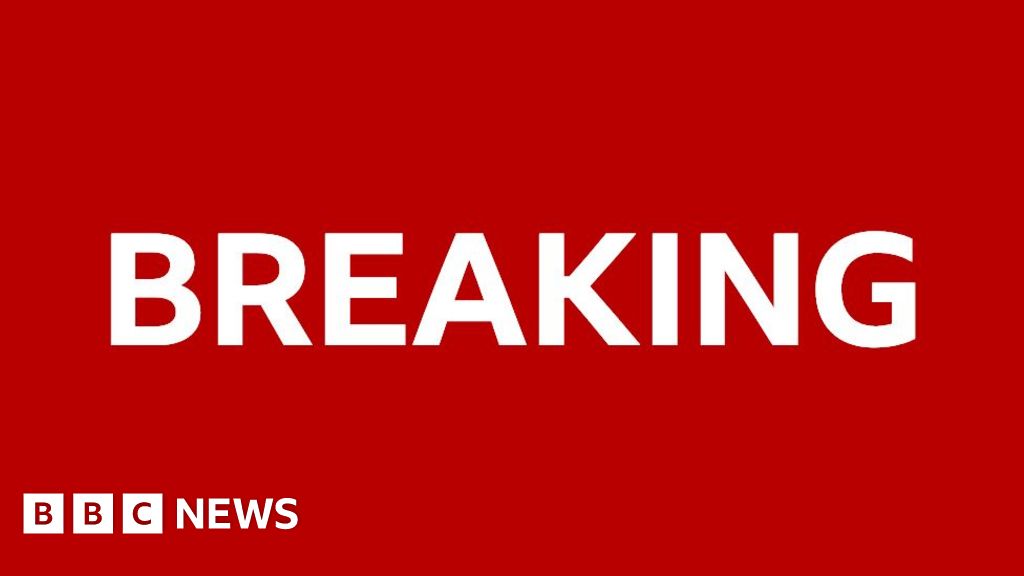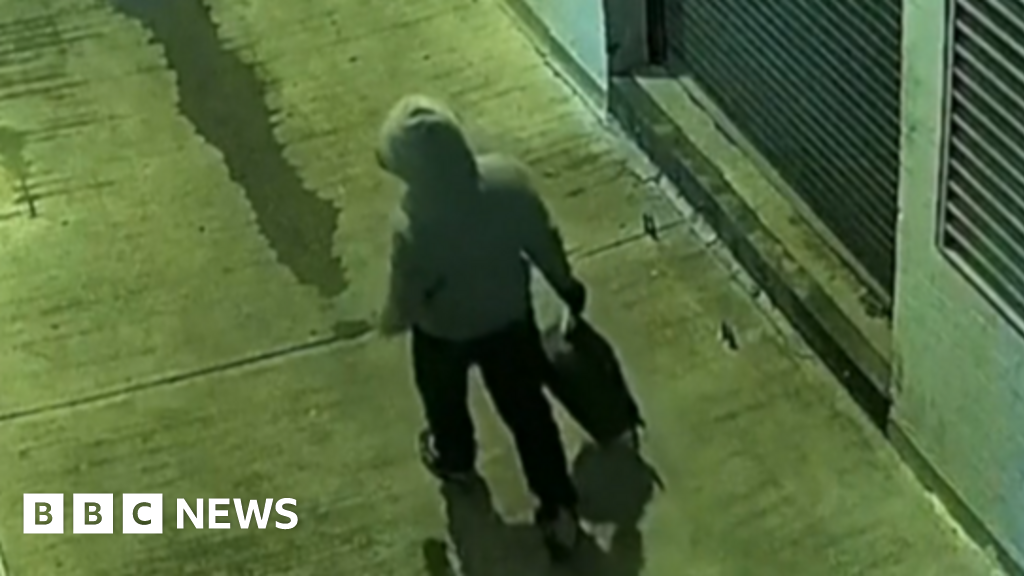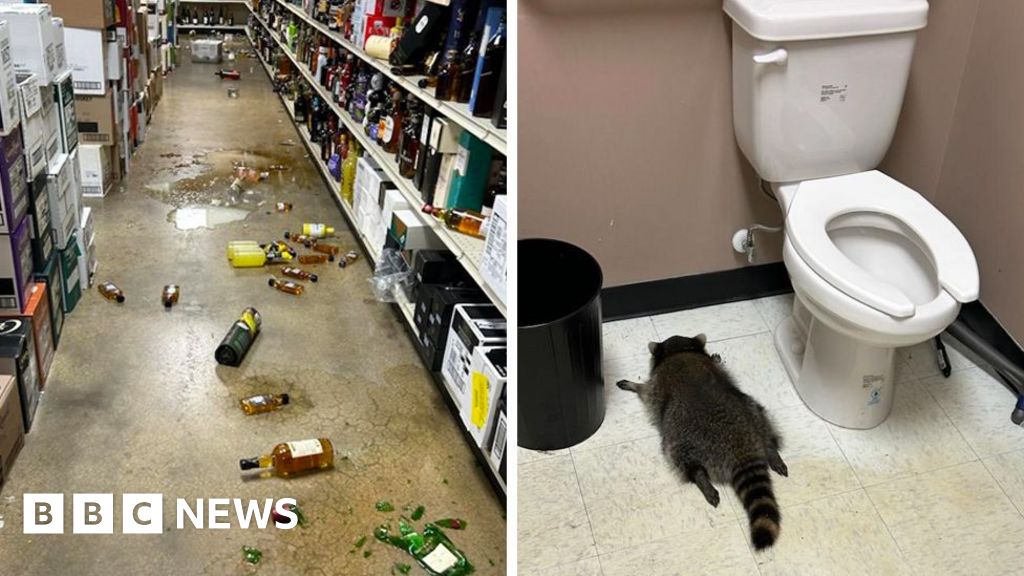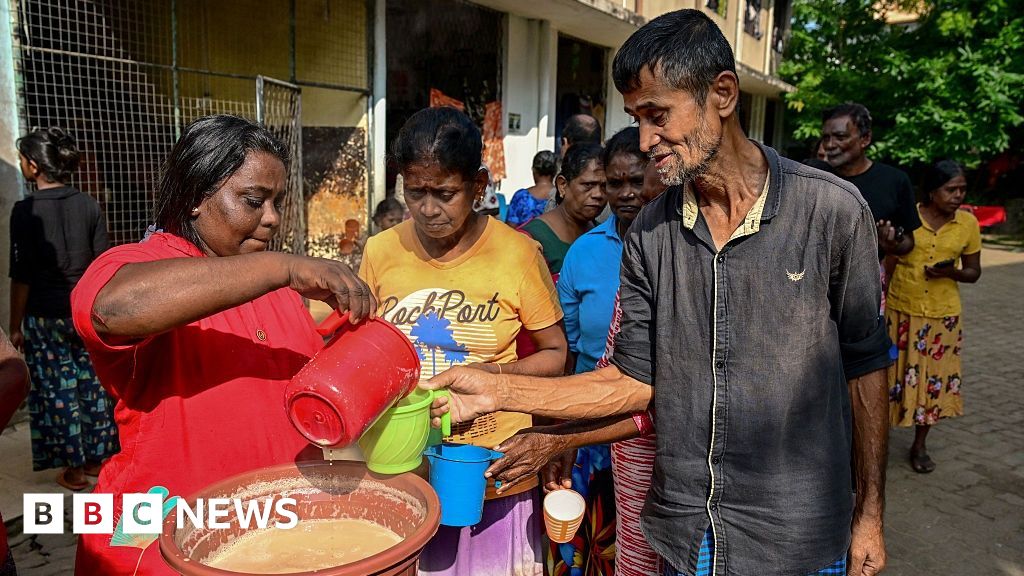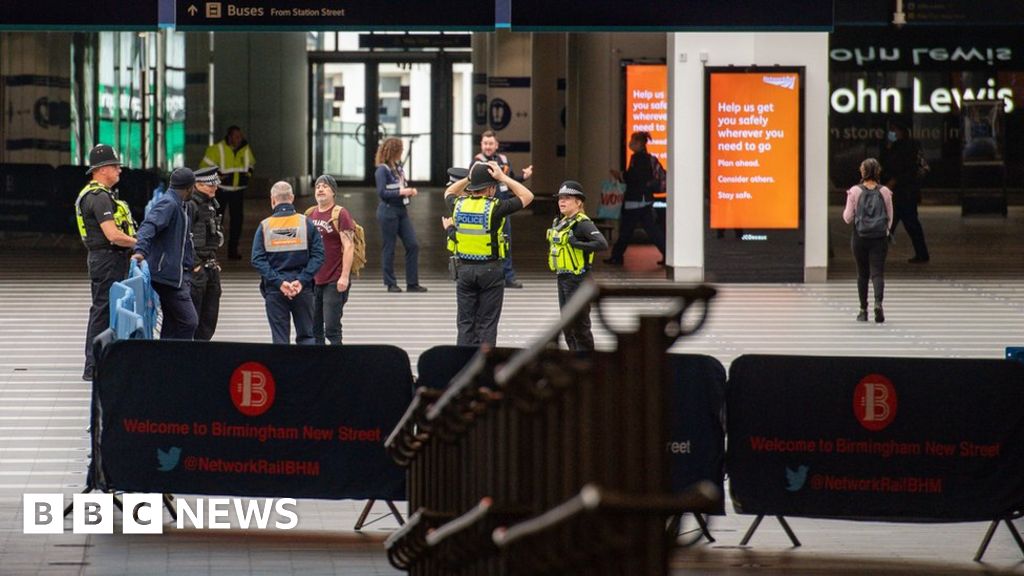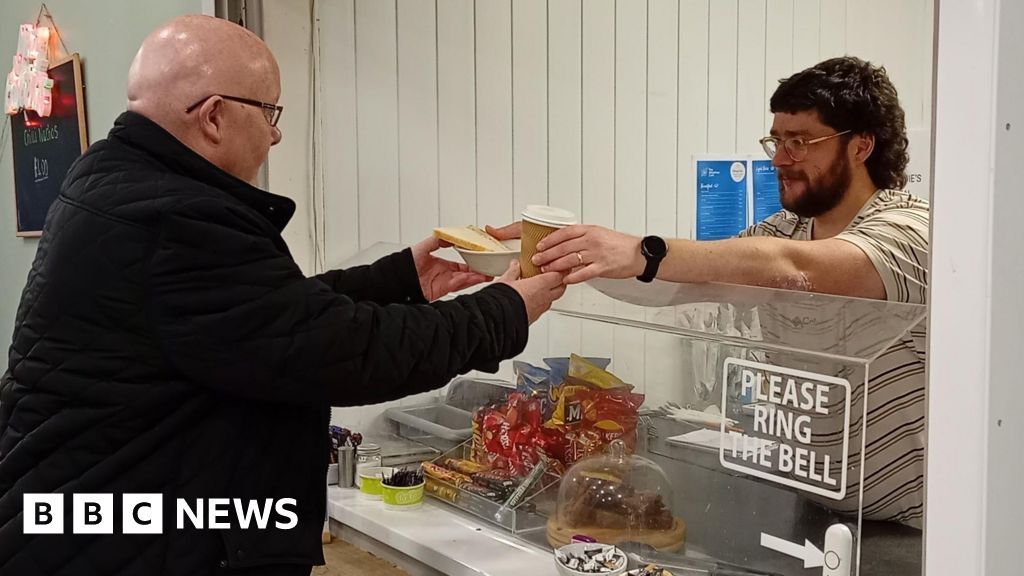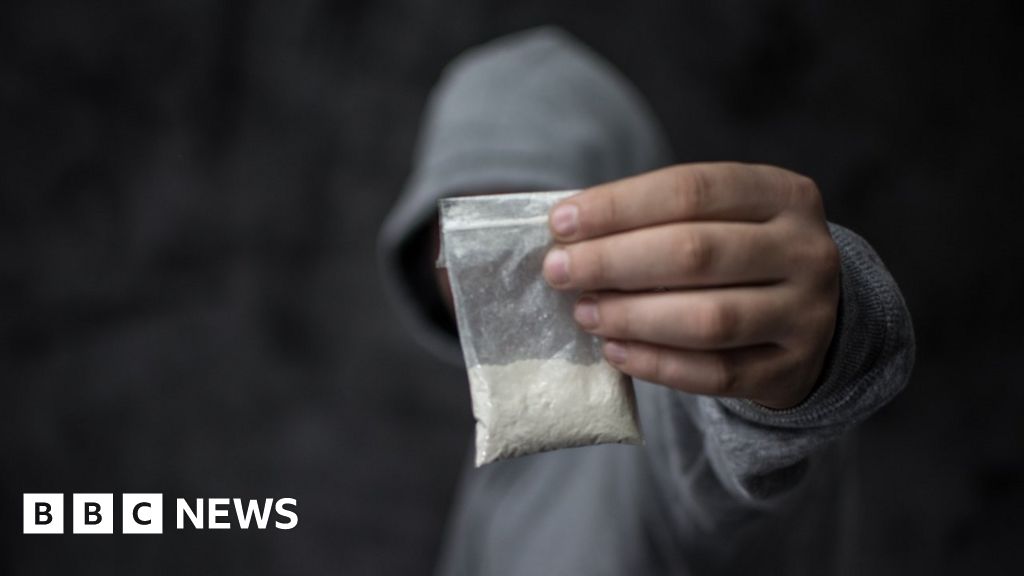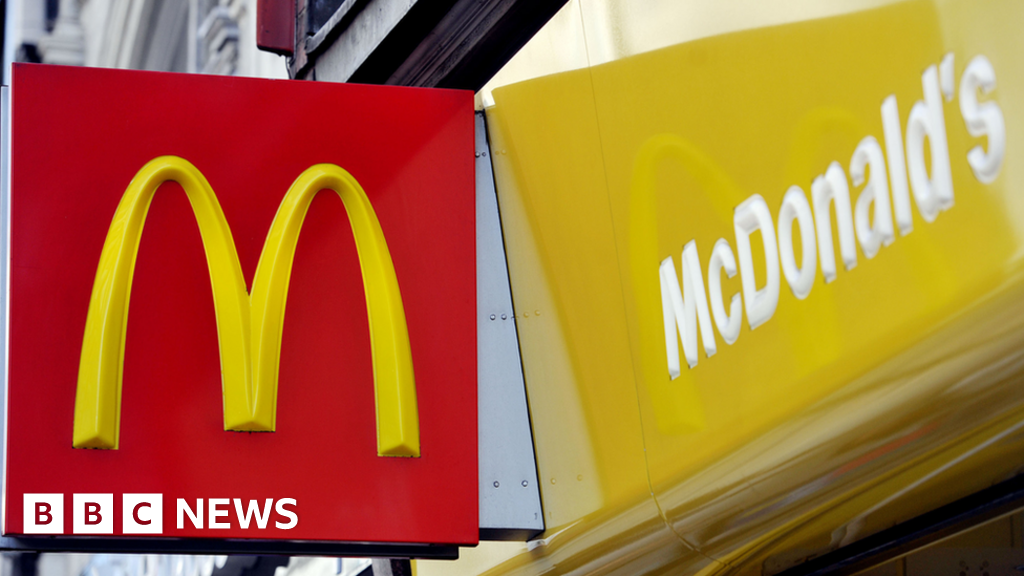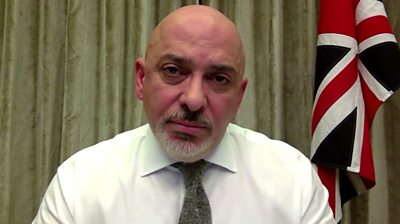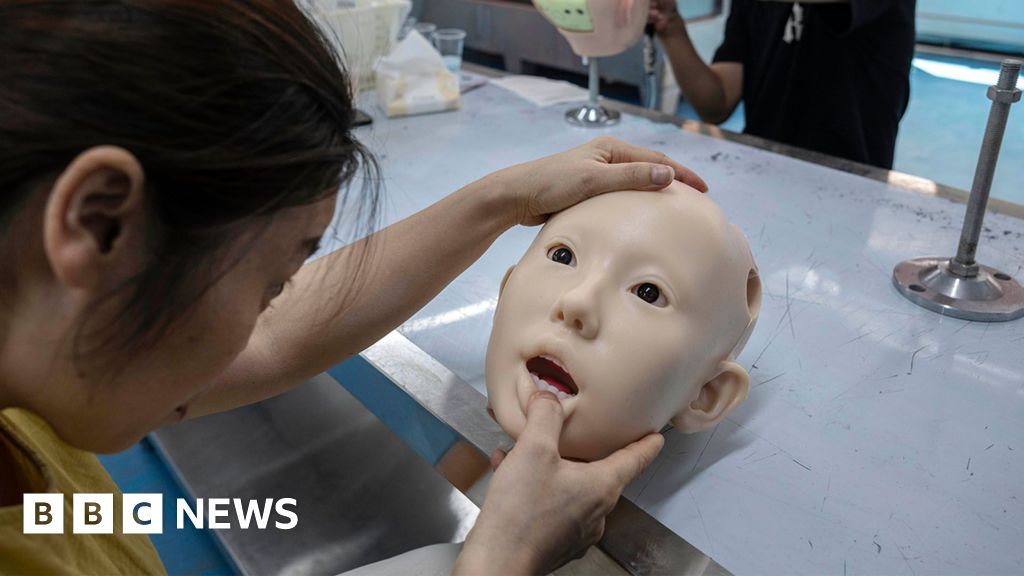Image copyright
Jacob King/PA Wire
Security staff and police officers are on duty at New Street station in Birmingham
Security guards trained in crowd control have been put on duty at some major railway stations following the easing of coronavirus restrictions.
Train firms operated reduced services during lockdown, but more frequent trains are now running in England.
People are being encouraged to go back to work in England, but only to use public transport for essential journeys when they have no alternative.
Some industry figures expressed concern over increased passenger numbers.
Network Rail said passenger numbers on Monday were “very similar” to last week, when the figure was slightly up on the previous week. However, footfall through major UK stations was only about 10% of pre-pandemic levels.
New crowd-control measures include preventing passengers from boarding a train or entering a platform if there are already too many people.
And more radical steps are being considered, such as passengers being required to book time slots for when they can arrive at a station.
Image copyright
SWNS
Edinburgh Waverley station was quiet on Monday morning
Image copyright
James Veysey/REX/Shutterstock
Transport for London has been encouraged by the government to get bus and train capacity back to 100% to help combat overcrowding
Train operators are already planning to limit numbers boarding specific services.
Many intercity trains will be reservation only and Avanti West Coast has said it would not allow carriages to be more than a third full.
Some train companies will block off seats to ensure that passengers spread out. It is also possible that if a service becomes busy early on, then trains will not stop at other destinations along their routes.
In future, train operators might not open the doors of certain carriages at earlier stations along a route so that people can get on at a later stop and still have the necessary space to keep their distance.
Network Rail chairman Sir Peter Hendy said an “enormous” effort had been made to manage the flow of passengers.
Stations have been reorganised, signs have been installed and space could be made outside for queuing in case entrances and exits are closed.
“We are relying on people to be sensible,” he told BBC Breakfast – adding that the rail industry was “keen” for people to wear face coverings while on public transport.
“We want people to stay apart if they humanly can and if they can’t, then a face covering is a quite sensible thing to do for the brief moments when you might be getting on or off a train or moving through a station,” he said.
However, senior figures from the rail industry insist they will not be policing whether people are following government guidelines.
Image copyright
Yui Mok/PA Wire
One-way systems to promote social distancing are already in place at stations, such as Clapham Junction in south-west London
Image copyright
Reuters
Manchester city centre also looked quiet on Monday
PC Jason Kelly said the number of passengers on his train from King’s Cross to north Hertfordshire had risen from two to up to 40 after lockdown measures were eased last week.
The officer, who was returning home after a night shift, was not confident that social distancing measures could be met if passenger numbers rise further.
“For some people it’s just like a normal day, people have got fed up with [coronavirus], they’ve had enough,” he said.
What is the situation around the UK?
People in England who are allowed to return to work have been asked not to use public transport if possible.
People in Wales have been told to avoid public transport where possible, and a reduced timetable will remain in place on Transport for Wales rail services.
Limited public transport services are running in Scotland for people who absolutely need to get to work and the situation is similar in Northern Ireland.
Transport for London (TfL) said it was introducing one-way systems, safety signs and announcements, and hand sanitiser dispensers to help people to keep to social distancing measures in the capital.
TfL says it will regularly update guidance on the 20 busiest stations to help people to avoid those areas.
Image copyright
Transport for London
Tube trains are being cleaned with anti-viral disinfectant, througout the pandemic
The capital’s public transport network has spoken to about 300 businesses and Transport Secretary Grant Shapps has indicated that office start times would be staggered to manage demand on public transport.
Meanwhile London’s congestion charge, which was suspended in March, has been reintroduced.
Gates will be used to prevent people from entering stations if it becomes too busy
Staff often outnumber passengers here at Euston station.
British Transport Police officers and security guards are on duty, in case there are crowds.
Every so often dozens of people stream off a platform when a train arrives into London. However it’s still incredibly quiet.
Yellow gates, which are folded-away, are dotted around. They could be used to close entrance points to the station or specific platforms if there are too many people.
There is hand sanitiser on offer in the centre of the concourse.
It’s weird for station managers to be pleased that there aren’t many passengers – but that’s the situation here this morning.
During the crisis the government is covering the losses made by train companies, which saw revenues evaporate when travel restrictions began.
But industry forecasting predicts that significant passenger numbers will return several weeks from now.
BBC transport correspondent Tom Burridge said train companies have said they are nervous about how the situation can be managed, once crowds return, with one source saying: “We are counting on the individual conduct of passengers.”
Another source said the industry had “done everything we can to suppress demand”.
- RESTRICTION CHANGES: What will happen next?
- LOCKDOWN SHOWDOWN: Four households go head to head
Mick Cash, the general secretary of transport union RMT, said there should be “new compulsory protections”.
“We have the crazy situation of Eurostar passengers arriving with masks on into St Pancras but then not wearing masks when they transfer to the Tube or other rail services,” he added.
How was your commute to work? Were extra crowd-control measures required? Share your pictures and experiences by emailing [email protected].
Please include a contact number if you are willing to speak to a BBC journalist.

